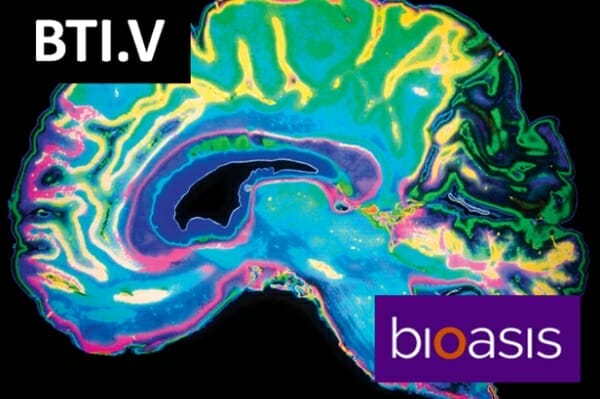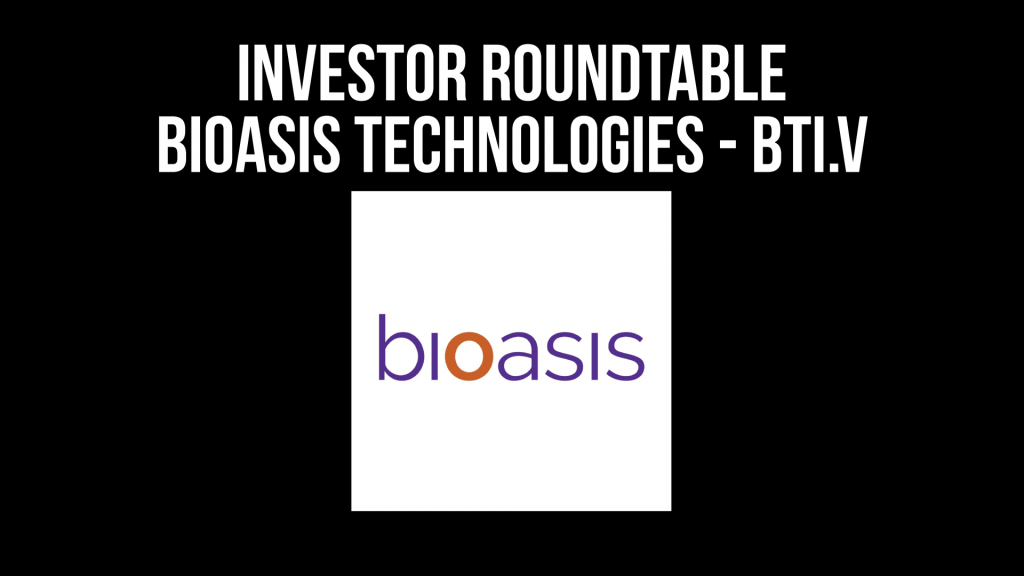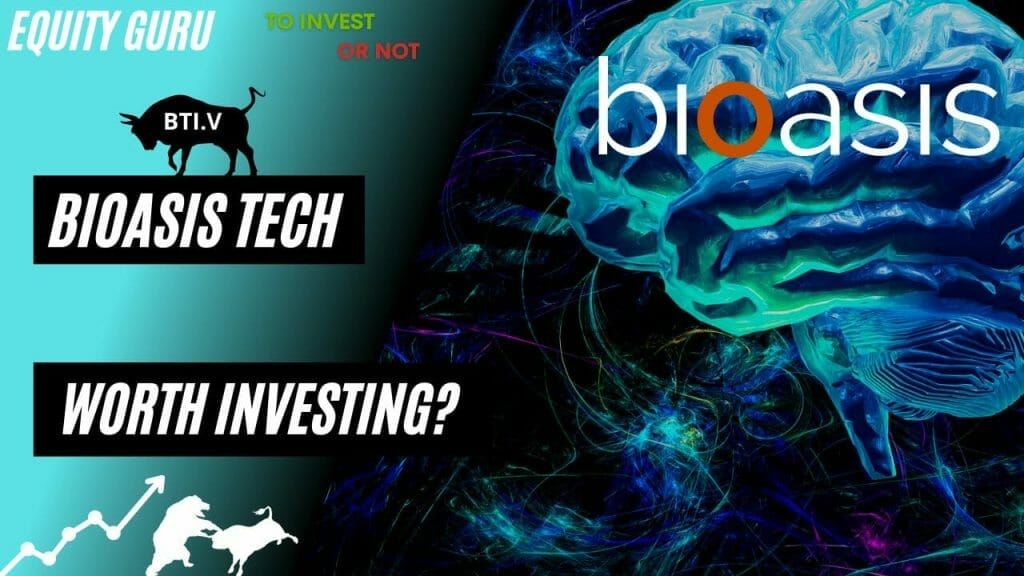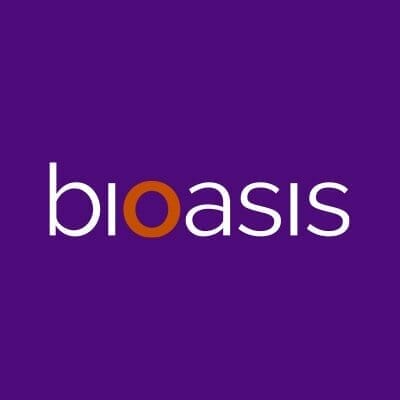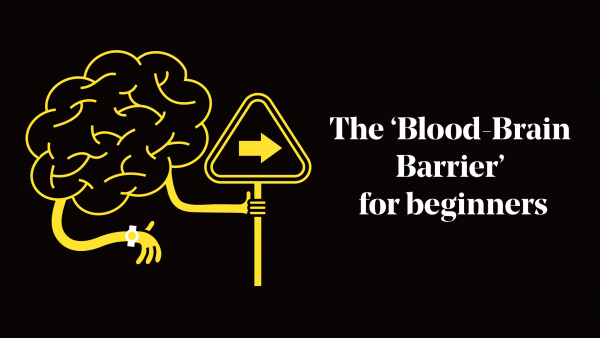Bioasis Technologies’ (BTI.V) xB3 platform is designed to deliver therapeutics across the blood brain barrier.
BTI’s proprietary tech is relevant to the treatment of brain cancers and neurodegenerative diseases.
Investing in small-cap pharmaceutical companies requires patience. Not every product in the pipeline pans out. Some trials have disappointing outcomes. Many investors can’t handle the zigs and zags.
Ten years ago, BTI was trading at $1.86. It bottomed out in March, 2020 at .18. Recently – in the wake of positive research news – the stock has perked up.
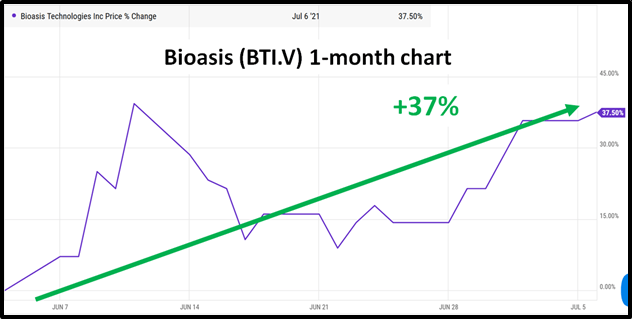
Getting medicine (drugs) across the brain barrier is like trying to break into a sophisticated vault with multiple security layers.
“The blood-brain barrier plays a vital role in protecting the brain from blood-borne disease and toxic compounds,” states BTI.
It is vigilant in defending against intruders while allowing access to the select few.
The power of the blood-brain barrier to protect us from harm means that delivering therapeutic drugs to the brain is exceptionally challenging.
More than 98% of small molecule drugs and nearly 100 percent of larger biologic drugs (antibodies and enzymes) cannot enter the brain at sufficient concentrations to cause therapeutic effects.
The complexity of the brain barrier is explained perfectly in the following video.
“The blood vessels that make up the blood brain barrier are different from those found in the rest of our body,” states BTI, “Every blood vessel in the body is lined with a single layer of endothelial cells, which serve as an interface between the circulating blood and the vessel wall.”
“However, where most blood vessels have gaps in between those endothelial cells, which allow molecules to pass through and reach different parts of the body. The blood brain barrier has tight joints at the junctions where the endothelial cells meet.
These tight junctions form a nearly impermeable boundary between the brain and the bloodstream, keeping out toxins and most pathogens and ensuring that only desirable molecules crucial to brain function can pass through.
These junctions are so effective at restricting access to the brain that they continue to foil any attempt to deliver treatments through those gaps.
The delivery of medicine across the blood-brain barrier has been the single greatest challenge in the treatment of hundreds of common and rare neurological diseases.
For generations of people suffering from brain cancers, neurodegenerative diseases and metabolic disorders, the blood-brain barrier represents a wall separating patients from effective treatments and hope.”
The target patient population is not small.
Each year in the U.S. an estimated 200,000 patients are diagnosed with Brain Metastases.
Brain metastases occur when cancer cells spread from their original site to the brain. Any cancer can spread to the brain, but the types most likely to cause brain metastases are lung, breast, colon, kidney and melanoma.
On average, patients diagnosed with brain metastases treated with steroid therapy alone survive one to two months.
By all accounts, brain metastases is a brutal medical condition.
“I’ve recently been diagnosed with brain mets (metastases) and I am currently on my 4th radiosurgery session,” reported one patient on a cancer forum, “I’m terrified all the nerve damage has been done and I’ll be permanently numb. I’m 48 and I’ve got 3 children.”

Bioasis Platform:
xB3 is based on a human transport protein found circulating at low levels in the blood. The xB3 platform has shown high efficacy in its ability to shuttle molecules across the blood-brain barrier and reach its targets within the brain through a process called receptor-mediated transcytosis.
Transcytosis occurs when molecules attach to receptors on the cell surface of endothelial cells forming the blood-brain barrier.
The receptors pull the molecules by vesicular transport through the cells, gaining access to the brain.
Preclinical studies have demonstrated that the xB3 platform can transport molecules of varying sizes and types including monoclonal antibodies, enzymes, small molecules, small-interfering RNA (siRNA) and other types of gene therapies into the brain.
“The value of the xB3 platform is the potential it has to turn non-brain-penetrating drugs into novel medical entities,” states BTI.
“The xB3 platform presents the opportunity to deliver medicines into the brain that were previously ineffective in treating the neurological aspects of a disease in a non-invasive manner.
Like a key designed to open a lock, the xB3 platform unlocks the door to the blood-brain barrier, allowing entry of therapeutics into the brain.
Discovery Development Programs
The in-house development programs at Bioasis are designed to develop effective treatments for patients suffering with neurological diseases.
Bioasis advances clinical studies when it is has achieved the appropriate outcome to inform a “go” or “no-go” decision based on the data generated through its research programs.
BTI has conducted research studies at more than 20 leading research institutions and biopharmaceutical companies.
xB3-001: Brain Metastases
Brain metastases are among the most common form of brain cancer in adults. For example, HER2-positive breast cancer has a high incidence of the cancer spreading from its primary site in the breast to the brain. The prognosis for these brain metastases is often fatal as the resulting brain tumors are largely untreatable because anti-cancer drugs cannot cross the blood-brain barrier at effective levels.
xB3-002: Glioblastoma
Glioblastoma is one of the most aggressive cancers that originates within the brain, and 80 percent of diagnosed primary malignant brain tumors are malignant gliomas. Glioblastoma is considered the deadliest form of brain cancer due to its high infiltration of surrounding brain tissue.
The standard treatment involves invasive surgical removal of tumors accompanied by subsequent radiation and chemotherapeutic treatments, which has remained unchanged for decades as most drugs are unable to cross the blood-brain barrier to act on the tumor.
Our proprietary xB3 platform technology offers the opportunity to turn non-brain-penetrating anti-cancer drugs into new entities that will be able to cross the blood-brain barrier, seek out cancer tumors in the brain and slow or stop their growth.
xB3-007: Neurodegenerative Disease
Neurodegenerative disease affects millions of people worldwide with increasing prevalence caused, in part, by an aging population.
The risk of developing neurodegenerative diseases, including amyotrophic lateral sclerosis, Parkinson’s, Alzheimer’s and Huntington’s, is increasing at a dramatic rate as the world’s population continues to age.
Bioasis xB3-007 program has the potential to turn non-brain-penetrating therapeutic drugs into CNS-targeting treatments capable of slowing down or preventing disease progression.
On June 3, 2021 BTI announced the publication of research validating the ability of the company’s xB3 ™ platform to cross the intact blood-brain barrier and its localization in variety of brain cell types.
Professor Wilfred Jefferies together with scientists from both the Jefferies Laboratory and Bioasis used multiple approaches to help pinpoint and then evaluate Bioasis’ xB3 platform technology by investigating its ability to traverse the BBB.
This research shows that the xB3 ™ platform can cross intact BBB and enter intracellular organelles within neurons, glia and microglia in the brain.
The research conducted by Singh, et al., “Discovery of a Highly Conserved Peptide in the Iron Transporter Melanotransferrin that Traverses an Intact Blood Brain Barrier and Localized in Neural Cells,” was published in the Frontiers in Neuroscience on June 2nd, 2021.
“This data is consistent with the previous studies where our technology successfully delivered enzymes, antibodies and siRNA across the BBB with demonstrated efficacy in both the brain and the periphery in settings as diverse as brain cancers, neuropathic pain and lysosomal storage disorders,” stated Dr. Deborah Rathjen, Executive Chair of the Board, Bioasis.
In the following June 15, 2021 video, Rathjen talks to Proactive Investors about the recent scientific publication results.
“We know that our technology is superior to many of the other technologies that we’ve evaluated side by side in our research programs,” stated Rathjen, “It’s working at its natural receptor on the blood brain barrier to transport molecules across the blood brain barrier, and it’s not disturbing the blood brain barrier in any way.”
“We’ve got a number of very key competitive advantages with the xB3 platform,” added Rathjen.
Full Disclosure: BTI is an Equity Guru marketing client.

